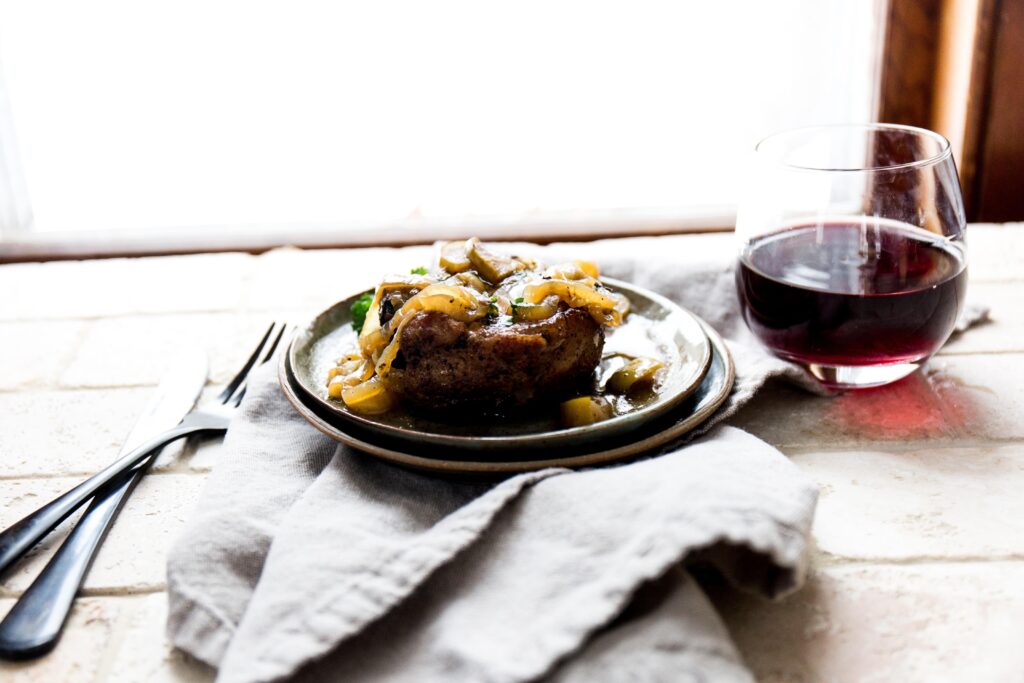L’accord mets et vins est un art subtil qui consiste à trouver le vin parfait pour accompagner votre plat, en créant une harmonie entre les saveurs et les textures.
If you're new to food and wine pairing, don't worry, there are simple tips you can follow to make your dining experience even more delicious. In this article, brought to you by Oeni, your wine cellar management app available on iOS and Android, we'll take a look at the basics of food and wine pairing and give practical advice on how to get it right every time.
1. Consider the intensity of flavours
When pairing food and wine, it's important to consider the intensity of the flavors of your dish and wine. Light, delicate dishes, such as seafood or vegetables, call for lighter, fresher white wines, like a dry white or sparkling wine. Richer, more flavorful dishes, such as grilled steak or stews, require fuller-bodied wines, such as a tannic red or a vin de garde.
2. Find complementary agreements
Complementary pairings are combinations that enhance the flavors and textures of food and wine. For example, a tannic red wine can be paired with a grilled steak, as the tannins blend well with the flavor of the grilled meat. Similarly, a dry, acidic white wine can be paired with seafood dishes, as its refreshing acidity complements the flavor of the seafood.
3. Look for contrasts
Contrasting pairings are combinations that create a balance between opposing flavors and textures. For example, a full-bodied red wine can be paired with a creamy cheese dish, as the acidity of the wine balances the richness of the cheese. Similarly, a sweet, fruity wine can be paired with a spicy dish, as the sweetness of the wine softens the spiciness of the spices.

4. Consider the region of origin
A wine's region of origin can be an indicator of its character and style. For example, Italian wines are often acidic and fresh, while Californian wines are often rich and fruity. If you're serving a regional dish, such as Italian pizza or French cassoulet, try to find a wine from the same region to create a more authentic culinary experience.
5. Don't neglect dessert wines
Dessert wines can be paired with a variety of dishes, especially sweet desserts. Sweet, fruity wines, such as port or mellow wines, can be paired with fruit or chocolate desserts. Sweet white wines, such as Sauternes, are ideal for cream or caramel desserts.
6. Test different chords
The art of food and wine pairing is highly subjective, so it's important to try out different combinations to find the one that best suits your palate. Try different types of wine with your dish to find the one that creates the best harmony. Don't be afraid to experiment and get out of your comfort zone by trying bolder combinations.

7. Respect your personal preferences
Although some food and wine pairings are considered classic, it's important to respect your personal preferences. If you prefer a particular wine with a dish, even if it doesn't fit the traditional rules of food and wine pairing, that's your choice. The important thing is to create a dining experience you'll enjoy.
8. Serve wine at the right temperature
The temperature at which wine is served is important to create an optimal taste experience. White and rosé wines should be served cool, at around 10 to 12 degrees Celsius, while red wines should be served at a slightly higher temperature, around 16 to 18 degrees Celsius. Dessert wines should be served chilled, but not too cold, at around 8 to 10 degrees Celsius.
9. Keep track of your successful deals
When you find a food and wine pairing that works particularly well, make a note of it. This can be useful when you're planning a special dinner or looking to impress guests. By keeping a record of your successful pairings, you can recreate these exceptional culinary experiences at any time.

Food and wine pairing is a subtle art that requires patience, creativity and practice to master. The basic principles of food and wine pairing are simple, but they can be applied in complex ways to create exceptional culinary experiences. By following these practical tips, you can start creating your own successful food and wine pairings and impress your guests with memorable taste experiences. Remember to respect your personal preferences and don't be afraid to experiment to find the perfect match for your favorite dish and wine.





